
How to Use OLED display: Examples, Pinouts, and Specs
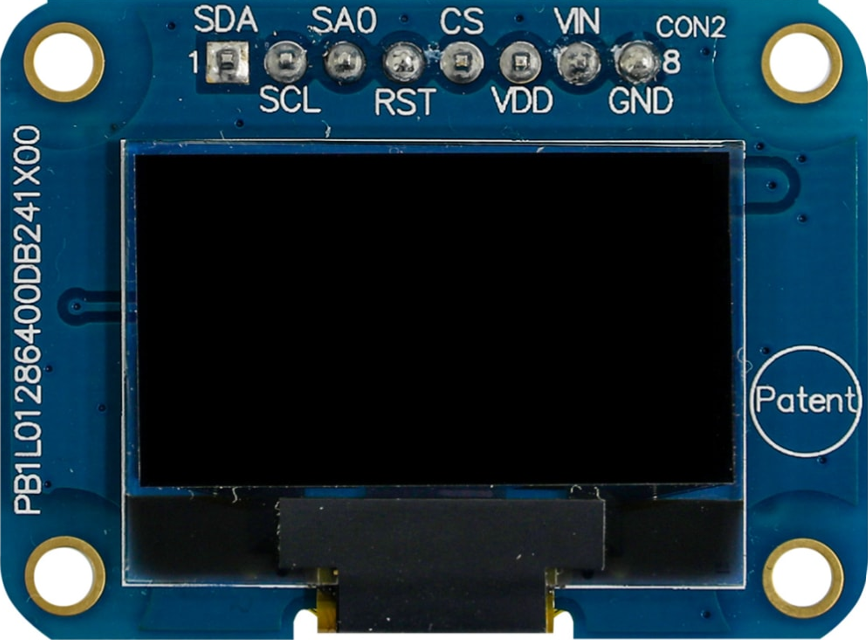
 Design with OLED display in Cirkit Designer
Design with OLED display in Cirkit DesignerIntroduction
The OLED (Organic Light Emitting Diode) display is a type of display technology that uses organic compounds to emit light when an electric current is applied. Unlike traditional LCDs, OLED displays do not require a backlight, resulting in higher contrast ratios, vibrant colors, and energy efficiency. These displays are available in various sizes and resolutions, making them suitable for a wide range of applications.
Common applications of OLED displays include:
- Wearable devices (e.g., smartwatches, fitness trackers)
- Consumer electronics (e.g., smartphones, cameras)
- Embedded systems and IoT projects
- Industrial equipment and control panels
- Prototyping with microcontrollers like Arduino and Raspberry Pi
Explore Projects Built with OLED display
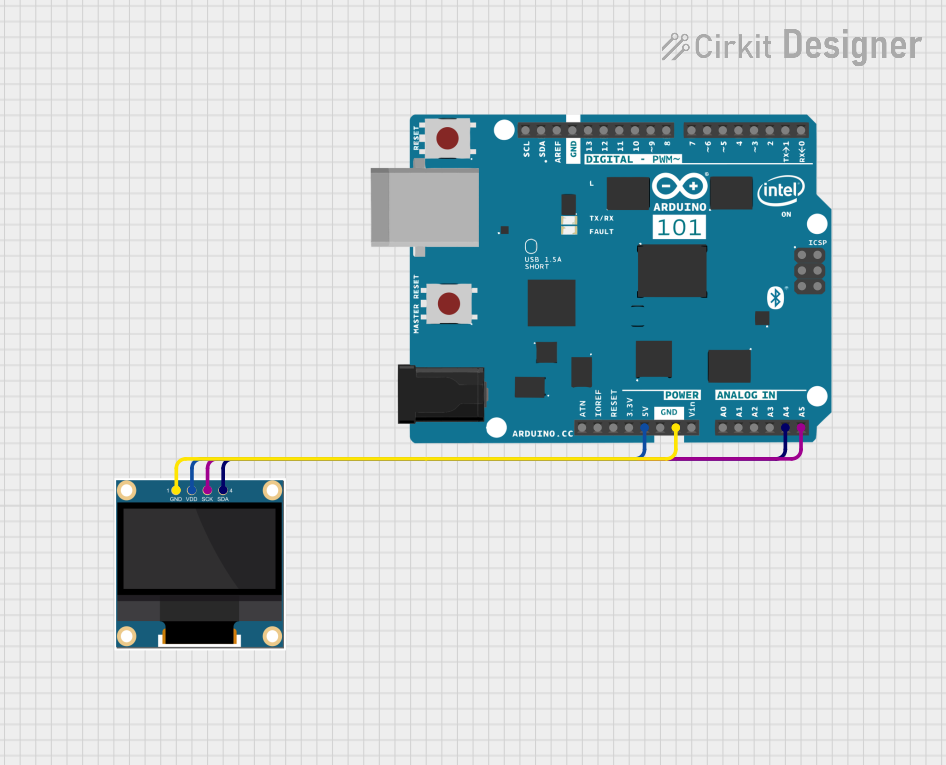
 Open Project in Cirkit Designer
Open Project in Cirkit Designer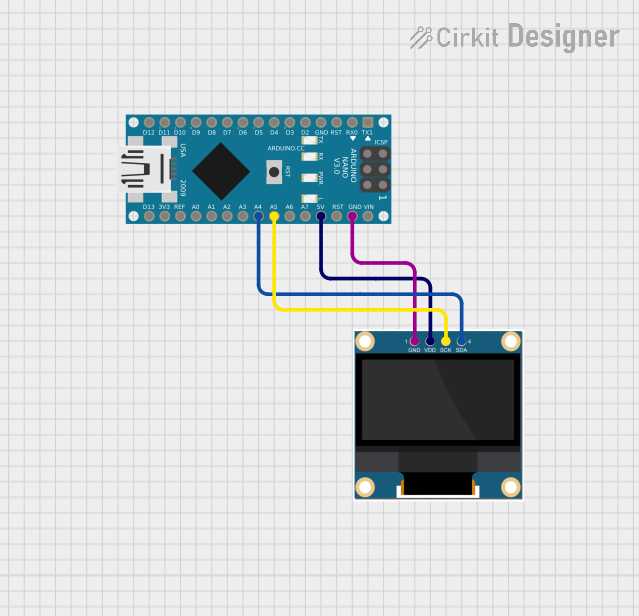
 Open Project in Cirkit Designer
Open Project in Cirkit Designer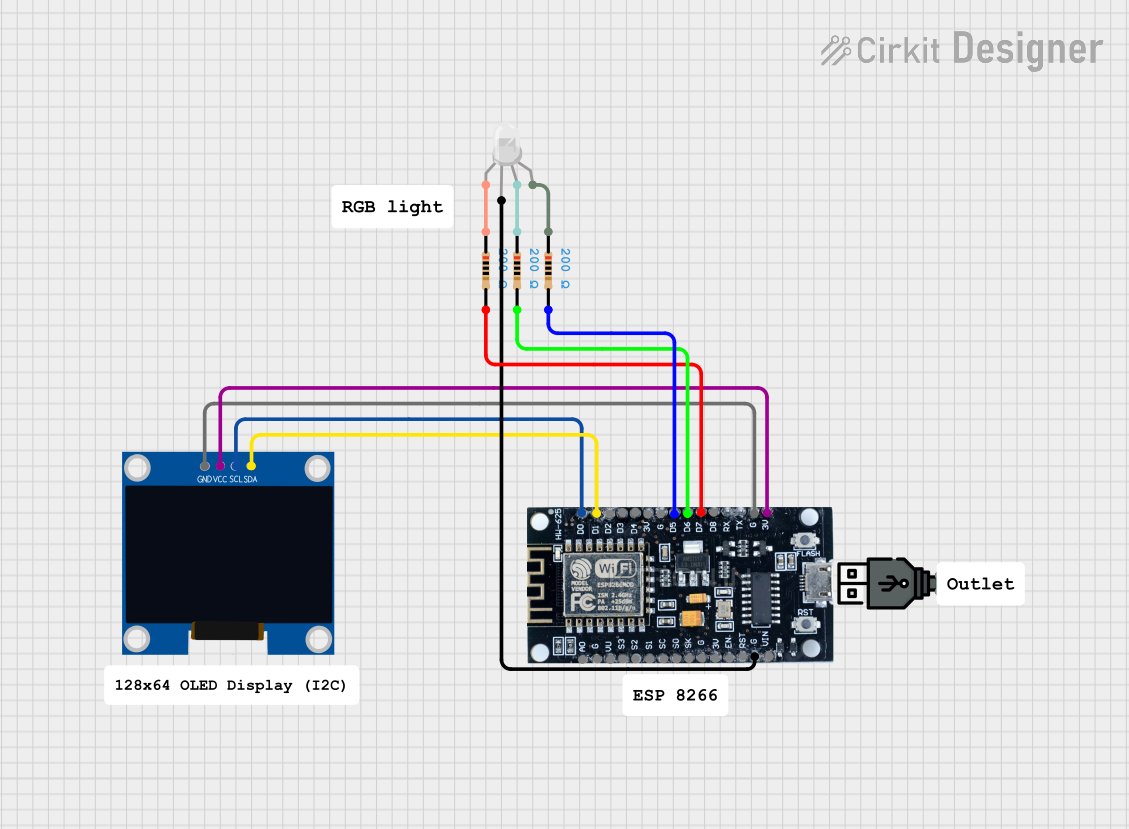
 Open Project in Cirkit Designer
Open Project in Cirkit Designer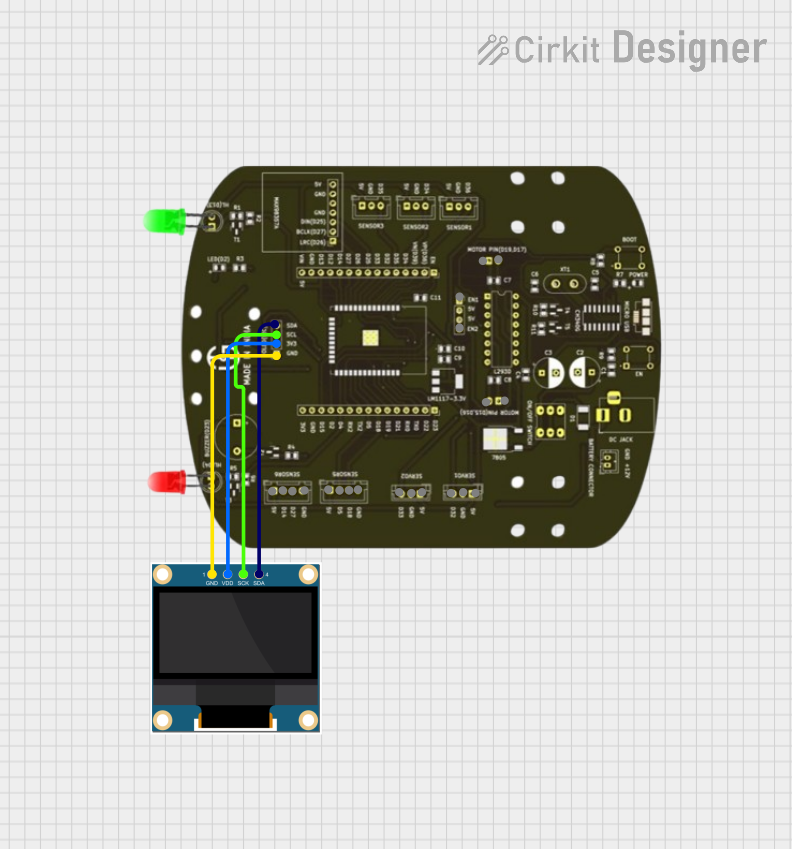
 Open Project in Cirkit Designer
Open Project in Cirkit DesignerExplore Projects Built with OLED display

 Open Project in Cirkit Designer
Open Project in Cirkit Designer
 Open Project in Cirkit Designer
Open Project in Cirkit Designer
 Open Project in Cirkit Designer
Open Project in Cirkit Designer
 Open Project in Cirkit Designer
Open Project in Cirkit DesignerTechnical Specifications
Below are the general technical specifications for a typical small OLED display module (e.g., 128x64 resolution):
| Parameter | Value |
|---|---|
| Display Type | OLED (Organic Light Emitting Diode) |
| Resolution | 128x64 pixels |
| Interface | I2C or SPI |
| Operating Voltage | 3.3V - 5V |
| Operating Current | ~20mA (varies with brightness) |
| Viewing Angle | >160° |
| Pixel Color | Monochrome (white, blue, or yellow) |
| Dimensions | Varies (e.g., 0.96", 1.3") |
Pin Configuration (I2C Interface)
| Pin Name | Description |
|---|---|
| VCC | Power supply (3.3V or 5V) |
| GND | Ground |
| SCL | Serial Clock Line (I2C clock) |
| SDA | Serial Data Line (I2C data) |
Pin Configuration (SPI Interface)
| Pin Name | Description |
|---|---|
| VCC | Power supply (3.3V or 5V) |
| GND | Ground |
| SCK | Serial Clock (SPI clock) |
| MOSI | Master Out Slave In (SPI data) |
| RES | Reset pin |
| DC | Data/Command control pin |
| CS | Chip Select |
Usage Instructions
Connecting the OLED Display to an Arduino UNO (I2C Interface)
Wiring: Connect the OLED display to the Arduino UNO as follows:
- VCC → 5V
- GND → GND
- SCL → A5 (I2C clock on Arduino UNO)
- SDA → A4 (I2C data on Arduino UNO)
Install Required Libraries:
- Open the Arduino IDE.
- Go to
Sketch>Include Library>Manage Libraries.... - Search for and install the following libraries:
Adafruit GFX LibraryAdafruit SSD1306
Upload Example Code: Use the following example code to display text on the OLED:
// Include necessary libraries #include <Adafruit_GFX.h> // Graphics library for OLED #include <Adafruit_SSD1306.h> // Driver for SSD1306 OLED // Define OLED display dimensions #define SCREEN_WIDTH 128 #define SCREEN_HEIGHT 64 // Create an instance of the display object Adafruit_SSD1306 display(SCREEN_WIDTH, SCREEN_HEIGHT, &Wire, -1); void setup() { // Initialize the display if (!display.begin(SSD1306_I2C_ADDRESS, 0x3C)) { // Check if the display is connected Serial.println(F("SSD1306 allocation failed")); for (;;); // Stop execution if initialization fails } // Clear the display buffer display.clearDisplay(); // Set text size and color display.setTextSize(1); // Text size multiplier display.setTextColor(SSD1306_WHITE); // White text // Display a message display.setCursor(0, 0); // Set cursor position display.println(F("Hello, OLED!")); // Print text display.display(); // Update the display } void loop() { // Nothing to do here }
Important Considerations and Best Practices
- Power Supply: Ensure the OLED display is powered within its operating voltage range (3.3V or 5V).
- I2C Address: The default I2C address for most OLED displays is
0x3C. If the display does not work, check the address using an I2C scanner sketch. - Contrast and Brightness: Prolonged use at maximum brightness may reduce the lifespan of the OLED display.
- Avoid Static Damage: Handle the display carefully to prevent damage from static electricity.
Troubleshooting and FAQs
Common Issues
The display does not turn on:
- Verify the wiring connections.
- Ensure the power supply voltage matches the display's requirements.
- Check if the I2C address in the code matches the display's address.
The display shows random or garbled characters:
- Ensure the correct libraries are installed and included in the code.
- Verify that the display resolution in the code matches the actual display.
The display flickers or dims:
- Check the power supply for stability.
- Reduce the brightness in the code to minimize power consumption.
FAQs
Can I use the OLED display with a 3.3V microcontroller?
- Yes, most OLED displays are compatible with both 3.3V and 5V systems. Check the datasheet for confirmation.
How do I change the I2C address of the display?
- Some OLED modules have solder pads or jumpers to change the I2C address. Refer to the module's documentation for details.
Can I use the OLED display with a Raspberry Pi?
- Yes, the OLED display can be used with a Raspberry Pi via I2C or SPI. Use libraries like
luma.oledfor Python programming.
- Yes, the OLED display can be used with a Raspberry Pi via I2C or SPI. Use libraries like
By following this documentation, you can successfully integrate and use an OLED display in your projects!